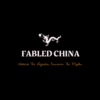Leizu, the wife of Emperor Huangdi, was an exceptionally skilled and resourceful woman. She taught the people how to raise silkworms, and through her observations, she developed a complete set of techniques for feeding the silkworms, extracting the silk, and weaving it into fine fabric. Thanks to her wisdom, people learned not only to make clothes but also to create ceremonial robes and shoes, transforming their primitive habit of wearing leaves and animal skins into the more refined practice of wearing garments made from silk.
It is said that Leizu was born in the ancient Xiling Kingdom around 5,000 years ago. She was a beautiful, graceful, and skilled young woman who lost her mother at a young age, and her father raised her on his own. Later, her father often had to leave for military campaigns, leaving Leizu alone at home. With little to occupy her time, she often wandered the countryside with other village girls. As time passed, she explored all the nearby areas and eventually grew bored.
One day, Leizu had the idea to visit the mulberry grove outside the village, a place she had never been before. There, she discovered many small white fruits hanging from the trees. Excited by her find, she and the other girls collected the fruits to bring back home. When they returned, Leizu decided to taste the fruits, but to her surprise, they had no flavor and were hard to bite into. Leizu thought that perhaps the fruits weren’t meant to be eaten raw, so she decided to cook them. She boiled them for a long time, but even after the long cooking time, they were still inedible.
Frustrated, Leizu grabbed a wooden stick and began stirring the boiling fruits. After a while, she noticed something unusual—fine white threads were winding around the stick. Surprised, she continued to stir, and gradually, all the small white fruits turned into long, fine threads. When she touched the threads, she realized they were strong, not like spider silk, which is easily torn, but somewhat messy. She thought the threads were too tangled to be of any use and left them aside to rest.
That night, in a dream, the Queen Mother of the West appeared to Leizu and smiled at her. She said, “Clever child, though the threads you pulled out are messy, they can be woven into fine silk.” The Queen Mother then taught her how to separate the threads and weave them properly.
The next day, Leizu, curious about what she had learned in her dream, returned to the mulberry grove and observed the silkworms closely for many days. She noticed that when the silkworms ate the leaves of the mulberry tree, they grew larger and fatter. Eventually, they would form a cocoon filled with silk threads. Leizu collected many of the silkworms, which were initially small and white, and began to experiment with feeding them mulberry leaves.
At first, Leizu called these creatures “heavenly worms,” but later renamed them “silkworms,” and the small round cocoons they created became known as “silk cocoons.” At home, she placed mulberry leaves in a large basket, layering them thickly, and then placed the silkworms on top. After the silkworms turned into cocoons, she boiled them, separated the silk threads, and used a small wooden stick to wind them onto a spool. In just a few days, she had created many sparkling bundles of silk.
Leizu, guided by the instructions from the Queen Mother in her dream, asked her father to help her build a loom for weaving the silk. She then began weaving the silk into beautiful, multicolored fabrics, which she used to make clothes. These garments were much lighter and warmer than those made from leaves and animal skins, and they were also more practical for work.
As Leizu’s techniques spread, all the women in her village began raising silkworms and spinning silk. They made beautiful clothes that replaced the primitive attire of leaves and animal hides. To honor her achievements, people began to refer to her as the “Silk Goddess” or “Mother Silkworm.”
One spring, while Leizu was once again tending her silkworms in the mulberry grove, a man saw her wearing beautiful silk clothes. He had never seen such exquisite garments and asked Leizu how they were made. Leizu explained the process of raising silkworms, extracting the silk, and weaving the fabric. The man was impressed, realizing that the people in his own region were still living in a primitive way, wearing animal skins in winter and leaves in summer. He grew to admire Leizu deeply and expressed his admiration for her. He invited her to come back with him and teach his people how to improve their lives. Leizu agreed, and they married. This man was none other than Emperor Huangdi.
After becoming Emperor Huangdi’s consort, Leizu brought her knowledge of sericulture to his tribe. She worked tirelessly to teach the women of the tribe how to raise silkworms and weave silk. Among the women she taught, one particular girl stood out for her cleverness and problem-solving abilities. Leizu admired her wisdom and, sensing the girl’s virtuous nature, secretly encouraged her to marry Emperor Huangdi. Although this girl was unattractive, Huangdi did not notice her at first. However, when the girl invented the spinning wheel and loom, Huangdi began to take notice of her. With Leizu’s support, the girl eventually became Huangdi’s second wife, and she was later revered as “Matchmaker Mother” by future generations.
Thus, Leizu’s contribution to the development of silk culture, her wisdom, and her legacy as a mother figure for both the silkworms and her people made her a revered figure in Chinese history.
